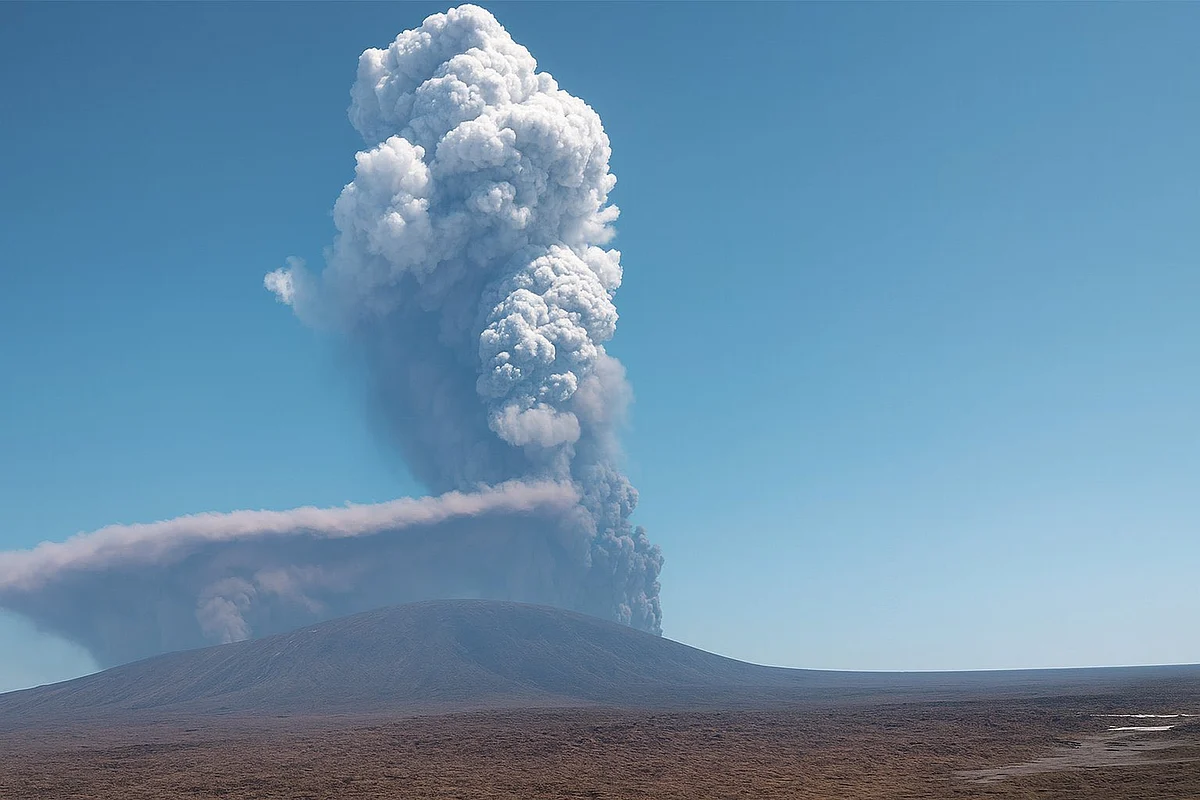
UAE Expert Says Ethiopia Volcano Ash May Reach Yemen, Oman: Emarat Al Youm
Volcanic ash and sulfur dioxide gas from Ethiopia's Haile Gobi eruption may reach parts of Yemen and Oman in the coming days, a top official told Emirati newspaper Emarat Al Youm on Monday.
Ibrahim Al Jarwan, Chairman of the Board of Directors of the Emirates Astronomy Society and a member of the Arab Union for Space and Astronomy Sciences, said current tracking shows the ash cloud moving east northeast toward the southern parts of the Arabian Peninsula.
Recommended For YouEarlier on Monday, Khaleej Times reported that the Oman Environment Authority issued an advisory on gas and ash emissions from the Hayli Gubbi volcano. The authority said the event could temporarily affect air quality in the Sultanate, but monitoring stations have not detected any rise in pollution levels so far.
Stay up to date with the latest news. Follow KT on Whatsapp Channels.
Al Jarwan said the first known eruption of the Haile Gobi volcano began on Sunday, November 23, at around 8.30am GMT. The volcano is located in Ethiopia's Afar region within the Great Rift Valley, and had remained dormant for thousands of years.
Satellite imagery showed a dense ash column rising more than 10km into the sky, visible across regional monitoring platforms.
Hayli Gubbi is part of the Erta Ale Range and is considered one of Ethiopia's long-dormant volcanic systems. Scientists say this eruption marks one of the most extraordinary volcanic awakenings in the region's recorded history. It is the first known eruption in about 10,000 years, producing ash that drifted across the Red Sea toward Yemen and Oman.
Despite its remote location, the scale of the plume drew immediate attention from aviation authorities, reaching altitudes close to 20,000 feet.
Al Jarwan said volcanic ash warning centres issued alerts to civil aviation because fine particles can affect aircraft engines, visibility and navigation systems. He said authorities in the area advised residents not to approach the volcano or inhale contaminated air.
He added that the event is significant for researchers, as it offers a rare opportunity to study a dormant volcanic system reactivating after millennia. It also highlights ongoing geological movement in the African Rift Valley, where shifts in the Earth's crust can trigger sudden volcanic activity. Although the eruption has reportedly subsided, experts warn that shield volcanoes can experience follow up explosions, which makes continued monitoring important.
According to Al Jarwan, the drifting ash and sulfur dioxide may reduce air quality in parts of Yemen and Oman. Some residents may experience eye or respiratory irritation, and the gas can react with moisture to produce light acid rain. Aviation routes over the Red Sea and surrounding regions may also be affected until conditions stabilise.
Data from VAAC Toulouse shows the ash and gas plume moving east northeast toward the southern edge of the Arabian Peninsula. Media reports have indicated that ash traces have already reached parts of Yemen due to prevailing winds. Regional agencies continue to monitor the movement of the plume in the coming days because wind direction can shift.

Legal Disclaimer:
MENAFN provides the
information “as is” without warranty of any kind. We do not accept
any responsibility or liability for the accuracy, content, images,
videos, licenses, completeness, legality, or reliability of the information
contained in this article. If you have any complaints or copyright
issues related to this article, kindly contact the provider above.

















Comments
No comment